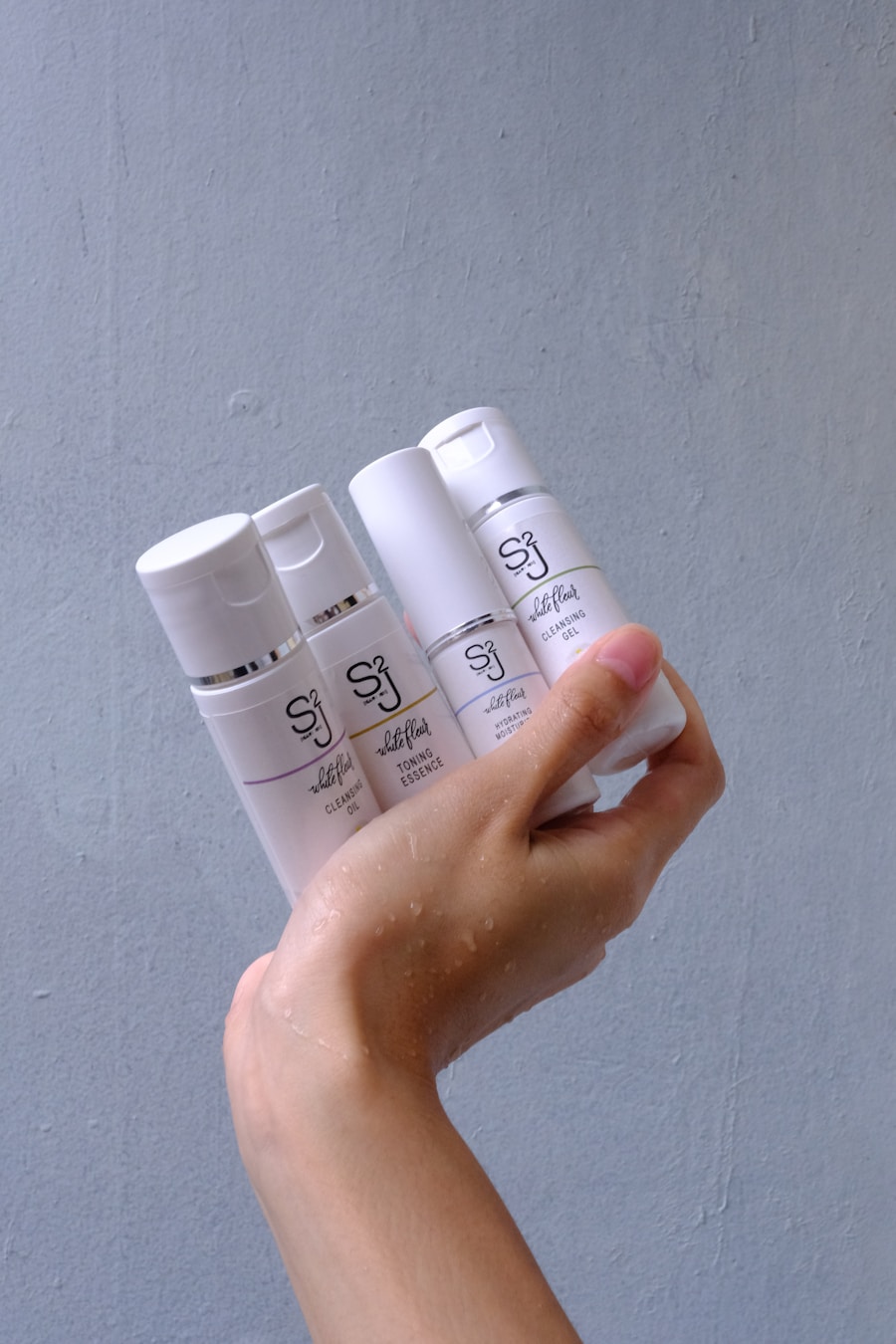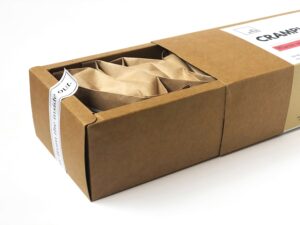When you think about skincare, your mind might immediately jump to the ingredients, formulations, and benefits of the products themselves. However, the packaging plays a crucial role that often goes unnoticed. The importance of skincare packaging cannot be overstated; it serves as the first point of contact between the consumer and the product.
Well-designed packaging not only protects the product but also communicates the brand’s values and promises. It can evoke emotions, create a sense of luxury, and even influence purchasing decisions. In a market flooded with options, effective packaging can set a product apart, making it more appealing to potential buyers.
Moreover, packaging is essential for maintaining the integrity of skincare products. Many active ingredients are sensitive to light, air, and temperature, which means that inadequate packaging can lead to degradation and reduced efficacy. For instance, products housed in opaque containers are less likely to be affected by UV light, while air-tight seals can prevent oxidation.
Therefore, understanding the importance of packaging goes beyond aesthetics; it is about ensuring that consumers receive products that deliver on their promises. As you explore various skincare options, consider how packaging contributes to both the experience and effectiveness of the products you choose.
Key Takeaways
- Skincare packaging plays a crucial role in protecting products from external factors and maintaining their efficacy.
- When choosing packaging for skincare products, it’s important to consider factors such as product compatibility, functionality, and branding.
- Packaging plays a key role in preserving the efficacy of skincare ingredients by protecting them from light, air, and contamination.
- Sustainable and eco-friendly packaging options, such as recyclable materials and minimalistic designs, are becoming increasingly popular in the skincare industry.
- Innovative packaging designs, such as airless pumps and dropper bottles, can enhance the user experience and make skincare products more convenient to use.
Choosing the Right Packaging for Your Skincare Products
Aligning with Brand Identity
For instance, if your brand emphasizes natural ingredients, you might opt for minimalist designs made from recyclable materials. On the other hand, if your brand is positioned as a luxury line, you may choose elegant glass containers that convey sophistication and quality.
Practicality of Packaging
In addition to aesthetics, consider the practicality of the packaging. Pump bottles are often favored for serums and lotions because they allow for controlled dispensing, minimizing waste and contamination. Tubes can be ideal for creams and gels, while jars may be suitable for thicker formulations.
Enhancing User Experience
By carefully considering both form and function, you can create packaging that not only looks good on the shelf but also enhances the user experience. Each type of packaging has its advantages and disadvantages, so it’s essential to think about how your target audience will interact with the product.
The Role of Packaging in Preserving the Efficacy of Skincare Ingredients

The efficacy of skincare ingredients is paramount to their success, and packaging plays a vital role in preserving these active components. Many ingredients, such as antioxidants and vitamins, are sensitive to environmental factors like light and air exposure. For instance, vitamin C is known for its powerful antioxidant properties but can quickly degrade when exposed to oxygen or UV rays.
Therefore, using air-tight containers or dark glass bottles can help maintain the stability of such ingredients over time. Additionally, proper packaging can extend the shelf life of products by preventing contamination. For example, jars may expose creams to bacteria each time they are opened, while pump dispensers minimize this risk by allowing users to dispense only what they need without touching the product inside.
By choosing packaging that protects against environmental stressors and contamination, you ensure that your skincare products remain effective throughout their intended lifespan. This not only benefits consumers but also reinforces your brand’s commitment to quality.
Sustainable and Eco-Friendly Packaging Options for Skincare Products
| Packaging Option | Material | Biodegradability | Recyclability |
|---|---|---|---|
| Glass Bottles | Glass | Biodegradable | Recyclable |
| Aluminum Tins | Aluminum | Biodegradable | Recyclable |
| Bamboo Jars | Bamboo | Biodegradable | Recyclable |
| Paperboard Boxes | Paperboard | Biodegradable | Recyclable |
As consumers become increasingly aware of environmental issues, sustainable and eco-friendly packaging options are gaining traction in the skincare industry. Many brands are now prioritizing materials that are recyclable or biodegradable, reflecting a commitment to reducing their carbon footprint. For instance, some companies have started using post-consumer recycled plastics or glass in their packaging, which helps minimize waste while still providing a premium feel.
In addition to material choices, brands are also exploring innovative designs that reduce excess packaging. For example, refillable containers allow consumers to purchase refills instead of new bottles, significantly cutting down on waste. By adopting sustainable practices in your packaging choices, you not only appeal to environmentally conscious consumers but also contribute positively to the planet.
As you navigate the skincare market, consider how your choices can align with a more sustainable future.
Innovative Packaging Designs for Enhanced User Experience
Innovative packaging designs can significantly enhance the user experience by making products easier to use and more enjoyable to apply. For instance, airless pump technology allows users to dispense every last drop of product without introducing air into the container, which can lead to oxidation. Similarly, travel-friendly designs that incorporate multiple functions—such as a moisturizer with built-in SPF—can simplify routines for busy consumers.
Moreover, interactive packaging elements can engage users in unique ways. Some brands have begun incorporating QR codes that link to tutorials or ingredient information when scanned with a smartphone. This not only educates consumers about how to use the product effectively but also fosters a deeper connection between them and the brand.
By focusing on innovative designs that prioritize user experience, you can create a memorable interaction that encourages repeat purchases.
How Packaging Influences the Perception of Skincare Brands

Visual Elements that Shape Perception
The colors, fonts, and materials used in packaging all contribute to how consumers perceive a brand’s identity. Consistency in packaging across a product line can reinforce brand recognition and loyalty. When consumers see familiar design elements, such as color schemes or logo placements, they are more likely to trust the brand and feel confident in their purchasing decisions.
The Influence of Packaging on Consumer Trust
As you explore different skincare options, pay attention to how packaging influences your perception of each brand. It can reveal much about their values and target audience. By being mindful of the packaging design, you can gain insight into what a brand stands for and who they are trying to appeal to.
Unconscious Decisions Based on Packaging
Ultimately, the packaging design can greatly influence our purchasing decisions, often unconsciously. By recognizing the impact of packaging on our brand choices, we can make more informed decisions that align with our values and skincare needs.
The Future of Skincare Packaging: Trends and Developments
The future of skincare packaging is poised for exciting developments as brands adapt to changing consumer preferences and technological advancements. One notable trend is the rise of smart packaging that incorporates technology to enhance user experience. For example, some brands are experimenting with temperature-sensitive labels that change color based on product freshness or usage indicators that help consumers track how much product remains.
Additionally, sustainability will continue to be a driving force in packaging innovation. As more consumers demand eco-friendly options, brands will likely invest in research and development to create biodegradable materials or explore alternative solutions like compostable films. The integration of technology with sustainability could lead to groundbreaking advancements that not only protect products but also benefit the environment.
Tips for Properly Storing and Using Skincare Products to Extend Shelf Life
To ensure that your skincare products remain effective for as long as possible, proper storage and usage are essential. First and foremost, keep products away from direct sunlight and heat sources; exposure to light can degrade sensitive ingredients over time. A cool, dark place—like a bathroom cabinet or drawer—is often ideal for storing most skincare items.
Additionally, always make sure to close containers tightly after use to prevent air exposure and contamination. If you’re using products from jars, consider using a clean spatula or your fingers (with clean hands) to avoid introducing bacteria into the container. Lastly, pay attention to expiration dates; many products have a shelf life indicated on their packaging or a symbol showing how long they remain effective after opening (usually represented by an open jar icon with a number inside).
By following these tips, you can maximize the longevity of your skincare products while ensuring they deliver optimal results every time you use them.
If you are interested in learning more about packaging for skincare products, you should check out the blog section of Blur and Co’s website. They offer valuable insights and tips on how to create eye-catching and functional packaging for beauty products. One article that caught my attention is “The Importance of Sustainable Packaging in the Beauty Industry.” You can read it here. It discusses the growing trend of eco-friendly packaging and how brands can make a positive impact on the environment by choosing sustainable materials.
FAQs
What is the importance of packaging for skincare products?
Packaging for skincare products is important for several reasons. It helps to protect the product from contamination, maintain its stability, and extend its shelf life. Additionally, packaging plays a crucial role in conveying important information to consumers, such as ingredients, usage instructions, and expiration dates.
What are the common types of packaging for skincare products?
Common types of packaging for skincare products include bottles, jars, tubes, and airless pumps. Each type of packaging has its own advantages and is suitable for different types of skincare products. For example, airless pumps are often used for products with active ingredients that need to be protected from air and light, while jars are commonly used for thicker creams and masks.
What should consumers look for in skincare product packaging?
Consumers should look for packaging that is hygienic, airtight, and light-resistant to ensure the stability and effectiveness of the skincare product. Additionally, it is important to check for packaging that is recyclable or made from sustainable materials to minimize environmental impact.
How does packaging impact the efficacy of skincare products?
The right packaging can help to preserve the efficacy of skincare products by protecting them from exposure to air, light, and bacteria. This is particularly important for products with active ingredients, as exposure to these elements can degrade the product and reduce its effectiveness.
What are some sustainable packaging options for skincare products?
Sustainable packaging options for skincare products include glass bottles, aluminum tubes, and biodegradable materials such as sugarcane-based plastics. These materials are recyclable and have a lower environmental impact compared to traditional plastic packaging. Additionally, some brands are also using refillable packaging to reduce waste.




